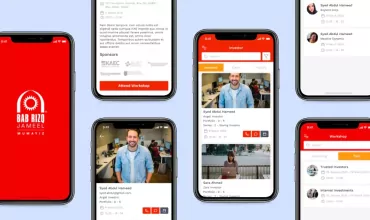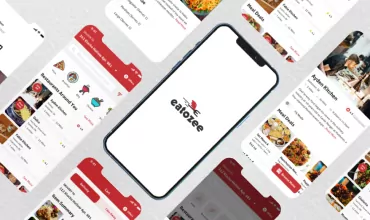Get the most from Mobility with Seven Sure-shot Strategies

Table of Contents
Online landscape witnesses a paradigm shift from laptops to mobile devices. As per the comScore report, about 80 percent of users have a smartphone for accessing the Internet, and mobile devices are accounted for 65 percent of digital media time spent by people. Even the search engine giant Google has acknowledged the dominance of mobile devices through offering high priority to mobile-friendly websites on SERPs. These are a few of the reasons why enterprises opt for customized enterprise mobile apps and mobile websites. However, enterprises need to make an effective strategy for leveraging all the benefits of thriving mobile platform.
Here are seven tactics any enterprise can implement to make the most from enterprise mobility concept:
1. Determining objectives
Okay. First things first-entrepreneurs need to discover the business objectives before implementing a mobile strategy. It is impossible to proceed with any mobile strategy without defining the objectives. Also, the business owners need to thoroughly understand the overall company strategy and competitors to get a better idea.
The following questionnaire can help entrepreneurs to define business goals and implementing mobile strategy:
· What are the corporate objectives?
· Who will handle the mobile strategy?
· How can we change the consumer and employee experience with a mobile strategy?
· How do we look the consumer and employee mobile demographics?
Answers to these simple questions can assist entrepreneurs in defining business objectives.
2. Selecting mobile environment
Business persons have to take a critical decision about the right mobile environment before embracing mobility to reach targeted audience. Usually, a mobile site and a mobile app are two options to consider, and companies can opt for any one or both the options depending on business nature and objectives.
Summarizing the key differences, mobile sites can be accessed by 99 percent of web-enabled devices, and their downloading is not necessary for the user. Mobile apps offer enhanced, mobile-focused functionalities including location services, scanning, offline usage abilities, etc. But, they require a device-specific download from the app store.
As recommended by Oracle and KISSMetrics, companies should go for both mobile site and an app providing they have enough resources because both serve different purposes while addressing different audiences.
It is inevitable for any company to develop the mobile roadmap before starting any mobility project like mobile application and mobile website development. Strategies mentioned above will help companies to come up with efficient mobility solutions.
After selecting the mobile environment, entrepreneurs need to focus on technology stack and choosing the proper development process. Agile development is preferable than Waterfall development for mobile apps.
3. Integrating social media
Social media platform is a great place to remain in touch with customers and stakeholders. Today, no company can afford to skip social media integration in both mobile websites and applications as social media has a great impact on people’s purchasing decisions. Entrepreneurs can listen to their audience and give them a personal touch through sharing reviews and engaging content on integrating social media into mobile sites and apps.
As we have various platforms available today, it is necessary to select platforms that can engage more and more existing and prospective customers.
4. Grabbing multi-device opportunity
These days, people use multiple devices including a PC, tablet, and a smartphone. Either a mobile website or an app enables business people to grab the multi-device opportunity in the form of running device-specific marketing campaigns. A mobile app is useful to deliver relevant content to the right people at the right time. It leads to RoI increase.
5. Sending alerts and notifications
A Pew Research Center report showed that 67 percent of smartphone owners regularly check their phones for messages or calls even if they don’t get their phone ringing or vibrating. Companies can take benefit of this tendency and send alerts and notifications on a regular basis.
Be it coupons, discounts, promotional offers, or business announcement, a customized mobile app is a great tool for engaging users and spreading awareness about products and services.
However, businesspersons should make certain that notifications are not annoying the customers in any way.
6. Leveraging localization
Google has emphasized on localization as 97 percent of consumers search for local businesses. If the company has a mobile website, it can efficiently address these consumers. When it comes to mobile apps, businesses can use GPS-based geolocation services and send location-targeted messages to the specific audience. Companies can also get more benefits of online commercials by adding location data. Data revealed that a 20 percent increase in conversion could be expected after adding location data to online ads.
7. Optimizing emails
Email marketing is indeed one of the most effective marketing channels. Email offers a great way to keep audience updated through newsletters. It is an undeniable fact that if a mobile reader opens an email for the second time from a different device, more clicks happen. In other words, emails should be optimized for mobile so that the users can readily open them on handheld devices for the first time.
Easy-to-click emails with short subject lines and having a screen width between 300 to 400 pixels are capable of giving a competitive edge to any company.
Conclusion
Enterprise mobility is a concept designed for enhancing productivity, increasing scalability, and improving flexibility of the business. Entrepreneurs can reap all the benefits of this concept through properly implementing the above-mentioned techniques while using technological advancements.



